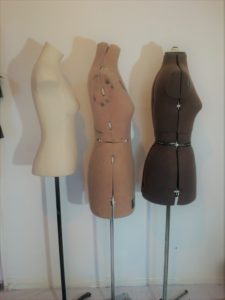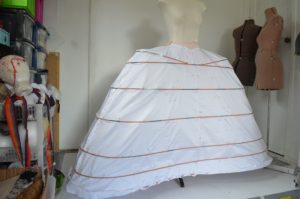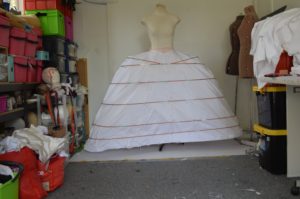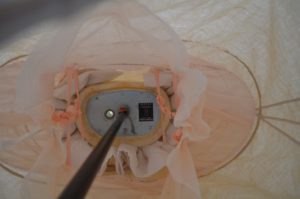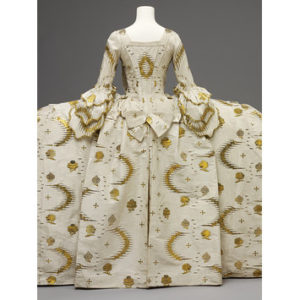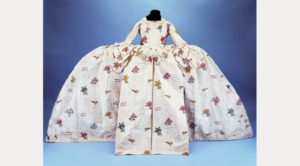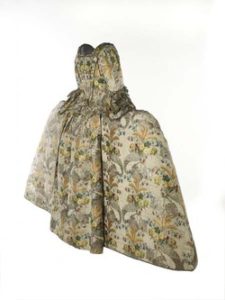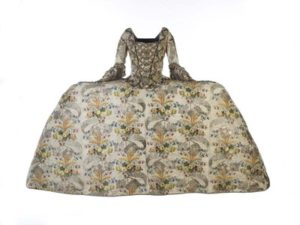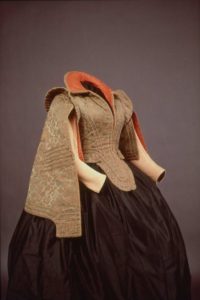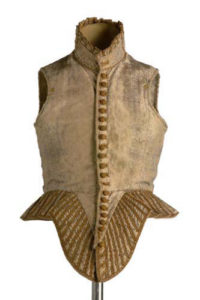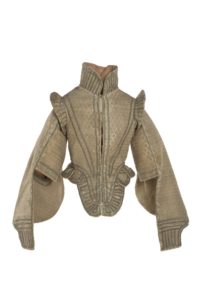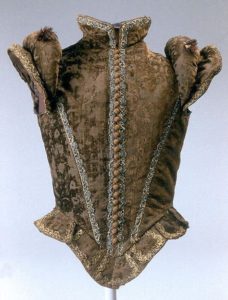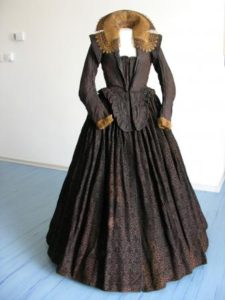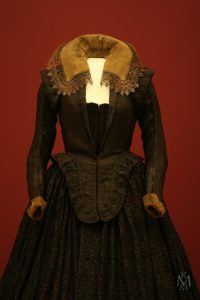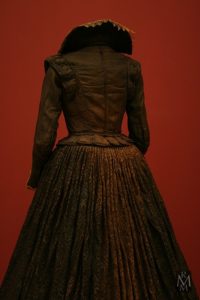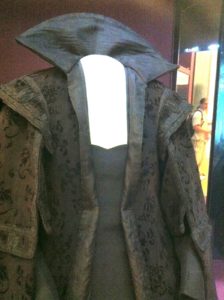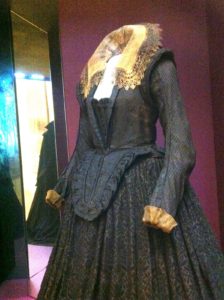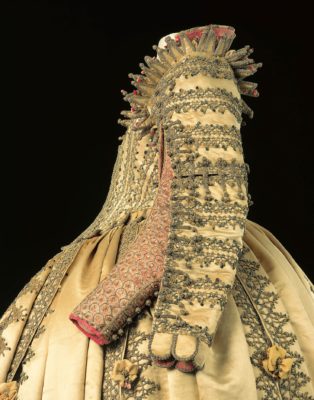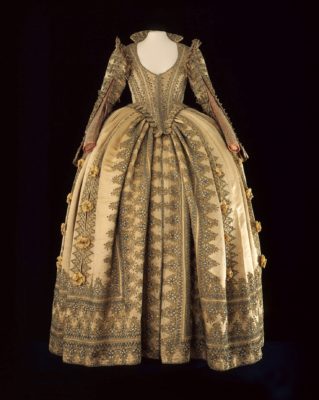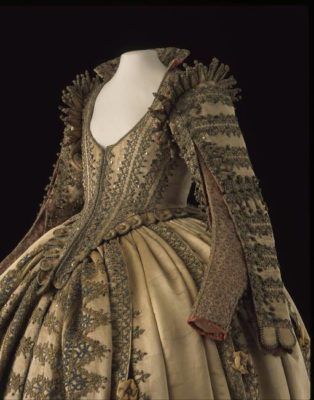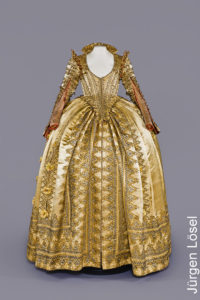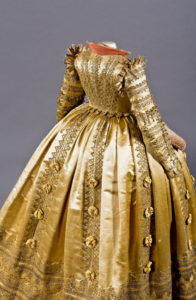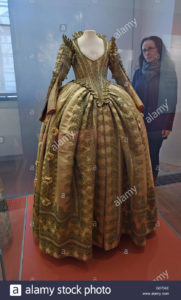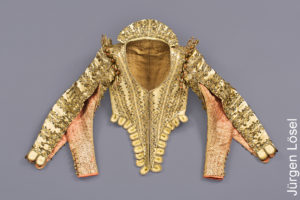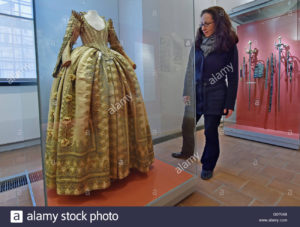anne of cleves progress
I am more than 5/6 through the overhanding of the gold borders. I physically can’t make tiny stitches but I also have no one to do this kind of sewing for me and no machine sewing even looks as nice as my slightly long stitches.
So, it’s a case of sck it up, no one will see unless they are actually at my hem. Also if they are they’ll hopefully notice the fabrics and before passing judgement already be thinking of the problems and solutions possible.
Also it’s real silk and real metal. Not mylar. The particular weaves are also very firm, very firm. To the point getting a needle through is tough. A needle needs to be sharp enough at the end to even get through the weave but not so sharp it winds up splitting the threads rather than pass betwee. The body also needs to be slick enough to pass between the threads and not drag them. And finally the needle needs to be solid enough to withstand the drag stress of passing through the fabrics (4 layers thick).
I’m also looking to do a series of in person and online workshops. Basically I have been queried a few times on why I rely on my instincts (and I’m framing both my initial and follow up responses in more specific ways) .
I do have good instincts on spotting a modern replica at 50 paces and it is built on a lifetime of access to artists and technical manuals that eventually have morphed into a shorthand. It’s hard to explain not because I don’t have an understanding but that each layer of understanding is built on previous and untangling that for someone who doesn’t have that background is difficult.
So I am working backwards and forwards through time and processes, so it’s taking a bit of work to hunt down resources. I learnt most modern pattern making from books I just read in the library and couldn’t request so I don’t even have records for what most them them- so this is requiring me to read modern drafting and draping books and figuring out what is very new and what is still the same from the 1960s/70s. These books were still on the shelves until very recently and were out of date stylistically but still current in terms of technique.
Luckily a lot of vintage books are starting to become available in e-format!
But that’s also something to take into account- we don’t use darts as much as seams now. It’s a stylistic change but also profoundly affects technique. Especially when looking at straight darts vs curved seams. And cutting fabric always changes the stretch within a large distance from the cut.
And once you cut fabric you can’t uncut it but you can unpick a dart. So again, profound technical changes that started as apparently stylistic choices.
And knits- or mechanical stretch- has really changed how things fit, are cut, and sewn, and assembled.
